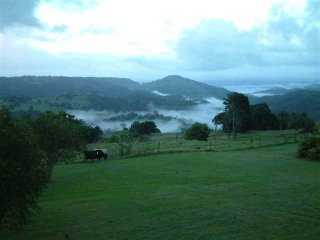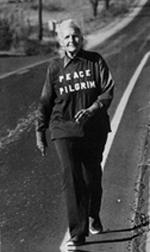
I know that in blogs you're supposed to put a link to long posts but I can't find an online version of this email that someone sent me. It crystallises so many of the things I've been thinking about this week.
What kind of people are these?
Joan Chittister, OSBThe country that went through the rabid slaughter of children at Columbine high school several years ago once again stood stunned at the rampage in a tiny Amish school this month.
We were, in fact, more than unusually saddened by this particular display of viciousness. It was, of course, an attack on 10 little girls. Amish. Five dead. Five wounded. Most people called it “tragic.” After all, the Amish represent no threat to society, provide no excuse for the rationalization of the violence so easily practiced by the world around them.
Nevertheless, in a nation steeped in violence — from its video games to its military history, in foreign policy and on its streets — the question remains: Why did this particular disaster affect us like it did? You’d think we’d be accustomed to mayhem by now.
But there was something different about this one. What was it?
Make no mistake about it: the Amish are not strangers to violence.
The kind of ferocity experienced by the Amish as they buried the five girl-children murdered by a crazed gunmen two weeks ago has not really been foreign to Amish life and the history of this peaceful people.
This is a people born out of opposition to violence — and, at the same time, persecuted by both Catholics and Protestants in the era before religious tolerance. Having failed to adhere to the orthodoxy of one or the other of the controlling theocracies of their home territories, they were banished, executed, imprisoned, drowned or burned at the stake by both groups.
But for over 300 years, they have persisted in their intention to be who and what they said they were.
Founded by a once-Catholic priest in the late 17century, as part of the reformist movements of the time, the Mennonites — from which the Amish later sprung — were, from the beginning, a simple movement. They believe in adult baptism, pacifism, religious tolerance, separation of church and state, opposition to capital punishment, and opposition to oaths and civil office.
They organize themselves into local house churches. They separate from the “evil” of the world around them. They live simple lives opposed to the technological devices — and even the changing clothing styles — which, in their view, encourage the individualism, the pride, that erodes community, family, a righteous society. They work hard. They’re self-sufficient; they refuse both Medicare and Social Security monies from the state. And though the community has suffered its own internal violence from time to time, they have inflicted none on anyone around them.
Without doubt, to see such a peaceful people brutally attacked would surely leave any decent human being appalled.
But it was not the violence suffered by the Amish community last week that surprised people. Our newspapers are full of brutal and barbarian violence day after day after day — both national and personal.
No, what really stunned the country about the attack on the small Amish schoolhouse in Pennsylvania was that the Amish community itself simply refused to hate what had hurt them.
“Do not think evil of this man,” the Amish grandfather told his children at the mouth of one little girl’s grave.
“Do not leave this area. Stay in your home here.” the Amish delegation told the family of the murderer. “We forgive this man.”
No, it was not the murders, not the violence, that shocked us; it was the forgiveness that followed it for which we were not prepared. It was the lack of recrimination, the dearth of vindictiveness that left us amazed. Baffled. Confounded.
It was the Christianity we all profess but which they practiced that left us stunned. Never had we seen such a thing.
Here they were, those whom our Christian ancestors called “heretics,” who were modeling Christianity for all the world to see. The whole lot of them. The entire community of them. Thousands of them at one time.
The real problem with the whole situation is that down deep we know that we had the chance to do the same. After the fall of the Twin Towers we had the sympathy, the concern, the support of the entire world.
You can’t help but wonder, when you see something like this, what the world would be like today if, instead of using the fall of the Twin Towers as an excuse to invade a nation, we had simply gone to every Muslim country on earth and said, “Don’t be afraid. We won’t hurt you. We know that this is coming from only a fringe of society, and we ask your help in saving others from this same kind of violence.”
“Too idealistic,” you say. Maybe. But since we didn’t try, we’ll never know, will we?
Instead, we have sparked fear of violence in the rest of the world ourselves. So much so, that they are now making nuclear bombs to save themselves. From whom? From us, of course.
The record is clear. Instead of exercising more vigilance at our borders, listening to our allies and becoming more of what we say we are, we are becoming who they said we are.
For the 3,000 dead in the fall of the Twin Towers at the hands of 19 religious fanatics, we have more than 3,000 U.S. soldiers now killed in military action, more than 20,600 wounded, more than 10,000 permanently disabled. We have thousands of widows and orphans, a constitution at risk, a president that asked for and a Congress that just voted to allow torture, and a national infrastructure in jeopardy for want of future funding.
And nobody’s even sure how many thousand innocent Iraqis are dead now, too.
Indeed, we have done exactly what the terrorists wanted us to do. We have proven that we are the oppressors, the exploiters, the demons they now fear we are. And — read the international press — few people are saying otherwise around the world.
From where I stand, it seems to me that we ourselves are no longer so sure just exactly what kind of people we have now apparently become.
Interestingly enough, we do know what kind of people the Amish are — and, like the early Romans, we, too, are astounded at it. “Christian” they call it.




